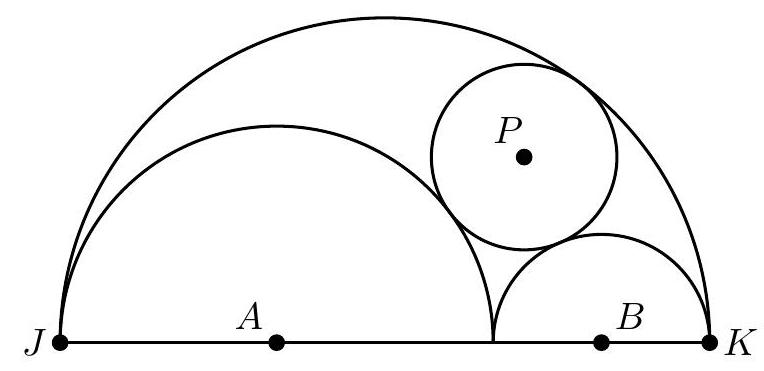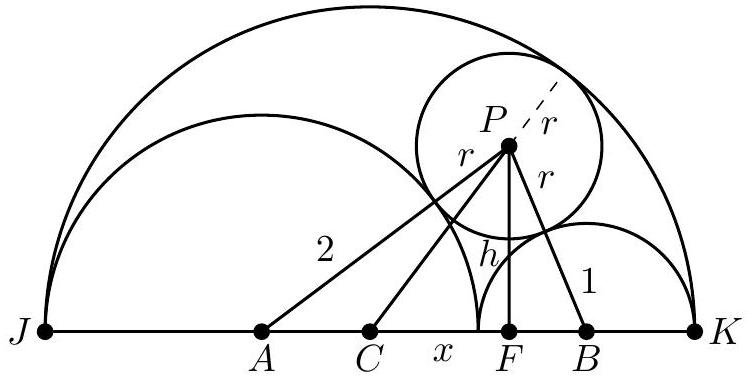¶ 2017 AMC 12A Problem 16
Problem:
In the figure below, semicircles with centers at and and with radii 2 and 1, respectively, are drawn in the interior of, and sharing bases with, a semicircle with diameter . The two smaller semicircles are externally tangent to each other and internally tangent to the largest semicircle. A circle centered at is drawn externally tangent to the two smaller semicircles and internally tangent to the largest semicircle. What is the radius of the circle centered at

Answer Choices:
A.
B.
C.
D.
E.
Solution:
Let be the center of the largest semicircle, and let denote the radius of the circle centered at . Note that , , and . Let be the foot of the perpendicular from to , let , and let . The Pythagorean Theorem in , and gives
This reduces to two linear equations in and , whose solution is .

OR
With the notation and observations above, apply Heron's Formula to and , noting that the former has twice the area of the latter and each has semiperimeter 3 . Thus
from which it follows that .
OR
With the notation and observations above, let . The Law of Cosines applied to gives
and simplifying yields . Applying the Law of Cosines to gives
and simplifying yields . Hence , so .
The problems on this page are the property of the MAA's American Mathematics Competitions